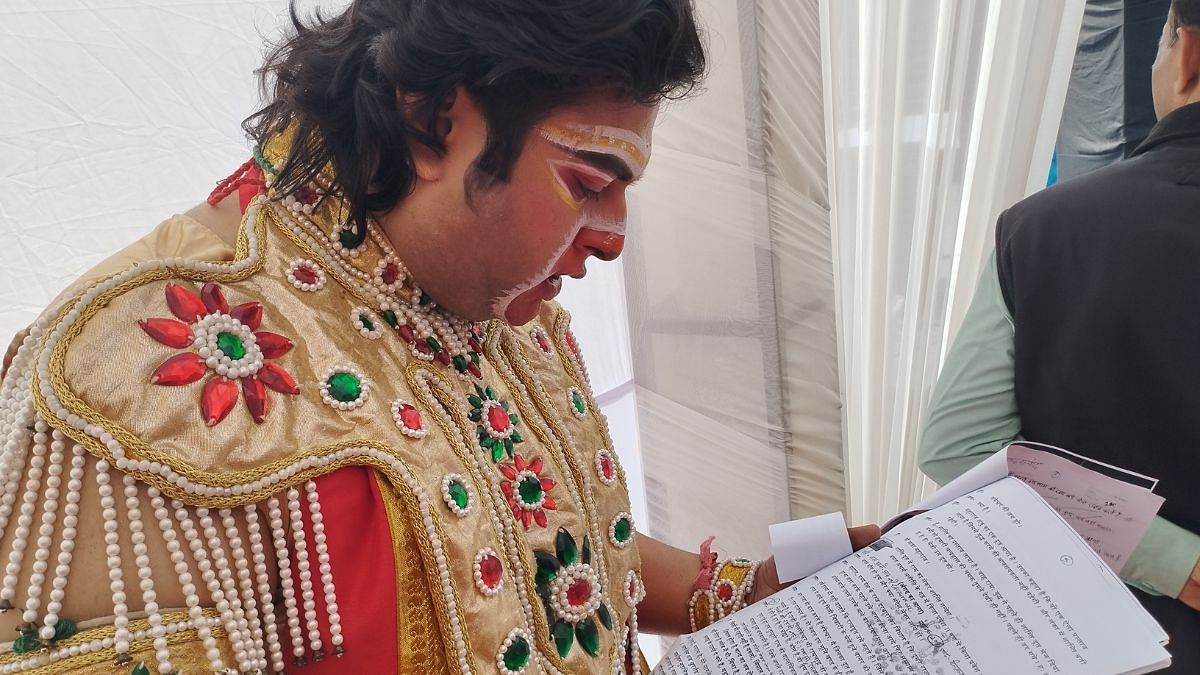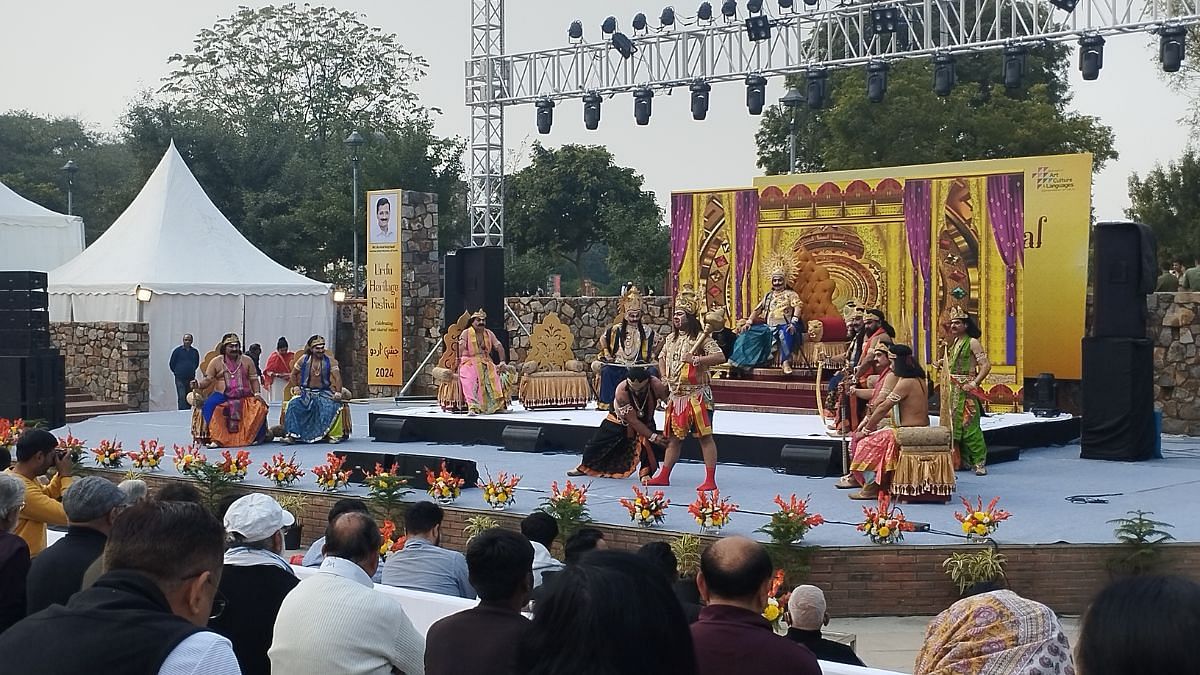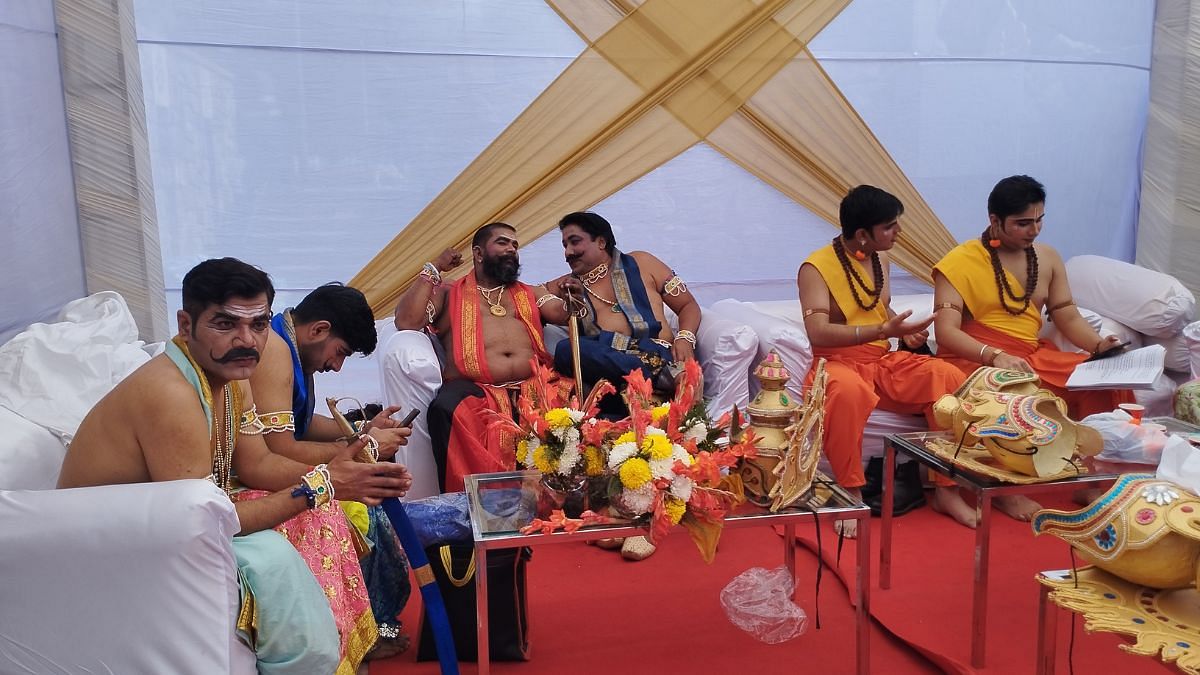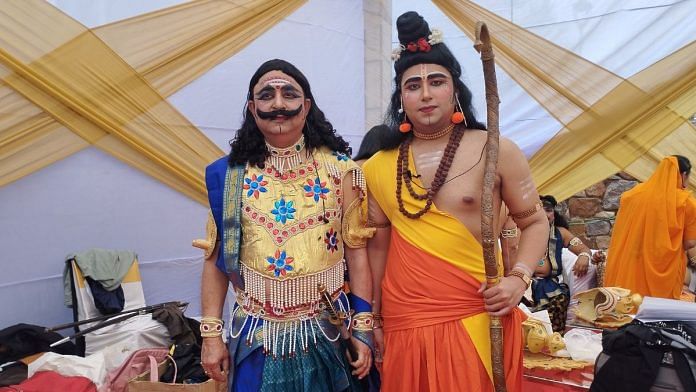New Delhi: Performing the Ramayana peppered with Urdu words such as masroor, mehr-o-mohabbat, falak, saadiq can be a powerful statement against those who view religions, languages, and history in impenetrable silos.
An Urdu Ramayana isn’t and needn’t be an oxymoron is the central message of Dastan-e-Ramayan: Ramleela in Urdu, a performance mounted by the Faridabad theatre group Shraddha Ramleela in Delhi’s Sunder Nursery.
Inside a white tent set up in the nursery, there’s a buzz of activity. Shamim Ahmed, 43, hastily applies makeup to portray Ravan, carefully lining his eyes with kohl to add drama. Meanwhile, Ram rehearses his lines, trying to memorise his dialogues. In a flurry of excitement, Sita, Ram, and Lakshman take to the stage to enact ‘Sita Haran’ (Abduction of Sita).
“Aap ke charano pe swami seem-o-zar qurban hain, sau tafa qurban charano par meri jaan hai ((At your feet, I sacrifice my head and wealth; a hundred tributes, my life at your feet),” Lakshman tells Ram.

Shraddha Ramleela is keeping the legacy of the Ramayana alive in Urdu — and preserving the Ganga-Jamuni culture too. The ‘Dastan-e-Ramayan: Ramleela in Urdu’ was performed as part of the four-day Jashn-e-Urdu festival that started on 22 February 2024 at Sunder Nursery. The event was organised with support from the Delhi government’s Art, Culture and Language Department in collaboration with the Urdu Academy.
“Hindi and Urdu are sisters. Both have been divided by politics. We have used the dialogues in Urdu without any alterations from the scriptures,” says Anil Chawla, director of the Urdu Ramleela.

Also read: Centuries-old history on the line in Delhi—Sunehri Bagh to Shahi Masjid fear DDA bulldozers
Ramayana and tehzeeb
In 1976, the theatre group Shri Shraddha Ramleela started showing Ramleela in Palwal, Haryana. With more members joining the group, the centre was relocated to Faridabad. Both Hindus and Muslims jointly organise this Ramayana.
To depict the scene of Ravan Angad Samvad, a grand set of a palace was arranged on the stage, adorned with large royal thrones, and rakshasas’ swords. Hanuman makes a dramatic entry.
“Meri talwar ke aage zamana sar jhukata hai, falak tak mere dar se khauf khata hai, meri dahshat se aalam ka kaleja kaamp jaata hai (The world bows before my sword, the sky trembles with fear of me, the core of the universe quakes with dread of my terror),” Ravan speaks in his booming voice.
What’s peculiar is that these artists do not know how to read Urdu and are unfamiliar with many of its words. They rely on their director to teach them how to pronounce them and convey their meanings right. The artists say they always saw their elders recite the Ramayana in Urdu and now continue this tradition to pass it on. They also take immense pride in their makeup artist, Shamim Alam, who not only enhances the stage but also contributes to incorporating the Ganga-Jamuni culture into their group.

‘Language is a language’
Speaking at a discussion after the Ramleela, Urdu critic and literary historian Khalid Alvi said that about 400 years ago, Persian was the official language of the state under the Mughals. At the time, Hindi and Urdu were commonly spoken, known as ‘Hindustani’. He claimed that the British were the first to suggest that Urdu belonged to Muslims and Hindi to Hindus.
As of today, more than 300 Ramayanas in Urdu exist. There are over 700 translations of the Gita, Mahabharata, Ramayana, and Ramcharitmanas in Urdu and Persian. According to Alvi, there are two types of Ramayanas in Urdu: prose and poetry, written by Hindus and Muslims.
“In Urdu poetry, whatever has been written has been focused on its psychological impact on the characters of the Ramayana,” says Alwi.
According to Alvi, people have considered the Ramayana as a sacred book and set it aside. However, the Ramayana defines what dharma (righteousness), mitr dharma (friendship), and raj dharma (righteous duties) are. That aspect of the Ramayana needs to be retained. He adds that the text is an excellent book and a social document to understand and explain the socio-political situation of the time.
Kunal Chawla, 22, who came specially from Mumbai to Delhi to portray the character of Ram, has memorised the dialogues of every character. He waits only for a cue to perform. He meticulously preserves his script of Urdu words written in Hindi and regards it no less than any scripture.
“Since childhood, we have been watching it. For us, the language of Ramleela has become Urdu. Language is just language. It has no religion. Urdu adds more charm to the Ramayana,” says Kunal.
(Edited by Humra Laeeq)



